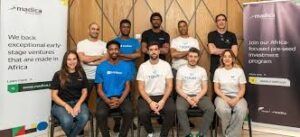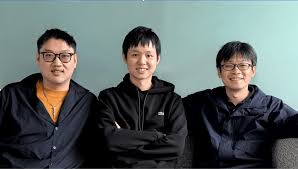AI infrastructure startup Tensormesh emerged from stealth with $4.5 million seed funding led by Laude Ventures and database pioneer Michael Franklin to build commercial version of open source LMCache utility—a key-value cache reuse system claiming up to 10x inference cost reduction through preserving and redeploying cached data across queries instead of discarding after each request.
Founded by Yihua Cheng (LMCache creator) and CEO Junchen Jiang, Tensormesh addresses GPU memory efficiency by storing KV cache data across multiple storage layers, enabling model reuse of previously processed information when executing similar processes in subsequent queries. The technology has attracted integrations from Google and Nvidia for open source implementations.
The company targets chat interfaces and agentic systems where models continuously reference growing conversation logs or action histories, claiming customers can avoid hiring 20 engineers for 3-4 months to build internal KV cache systems by adopting Tensormesh’s out-of-box product.
AI inference costs scale with GPU utilization and memory requirements. Key-value caching stores intermediate computations allowing models to avoid recalculating information when processing similar inputs. Traditional architectures discard KV cache after completing each query, requiring full recomputation for subsequent requests referencing similar context.
Jiang analogized the inefficiency: “It’s like having a very smart analyst reading all the data, but they forget what they have learned after each question.” Preserving cache across queries enables models to reference previously processed information without repeating computation—directly reducing GPU cycles required per inference request.
The 10x cost reduction claim assumes workloads with substantial query overlap. Chat applications where users ask follow-up questions about the same document, customer service bots handling similar inquiries, or code assistants working on a single codebase would benefit maximally. Novel queries without prior context gain less advantage.
For AI infrastructure operators, the value proposition balances memory cost against compute savings. Storing KV cache requires persistent storage (expensive at scale) but reduces GPU processing time (even more expensive given H100/H200 pricing). If storage costs represent a fraction of compute savings, economics favor cache persistence.
LMCache operates as an open source project maintained by Cheng, creating adoption among cost-sensitive users (researchers, startups, open source deployments) before commercial product launch. This approach mirrors successful open source-to-commercial pivots: Databricks (Apache Spark), HashiCorp (Terraform), Confluent (Apache Kafka).
The strategy provides advantages: technical validation through community adoption reducing perceived risk, integrations from Google and Nvidia signaling enterprise readiness, and established user base potentially converting to paid customers for enhanced features, support, and managed deployment.
However, open source also creates monetization challenges. If LMCache provides sufficient functionality, users may continue using the free version rather than purchasing commercial offerings. Tensormesh must differentiate commercial products through: enterprise features (security, compliance, SLA guarantees), managed service reducing operational overhead, or performance optimization beyond open source baseline.
Google and Nvidia integrations particularly matter. If hyperscalers incorporate LMCache functionality into native offerings, independent commercial products face adoption barriers. Google Cloud users may prefer integrated solutions over third-party vendors. Tensormesh must either: partner with cloud providers (becoming embedded option), target on-premise deployments where cloud integration doesn’t compete, or deliver superior performance justifying adoption despite cloud provider alternatives.
Jiang claims customers “hire 20 engineers and spend three or four months to build such a system” internally, positioning Tensormesh as a build-versus-buy opportunity. The assertion that KV cache persistence requires 60 engineer-months ($1-2 million fully-loaded cost) justifies commercial product pricing if Tensormesh delivers equivalent functionality at lower total cost.
The technical complexity stems from: memory management across storage tiers (GPU memory, CPU memory, disk), cache invalidation determining when stored data becomes outdated, distributed systems coordination when scaling across multiple servers, and performance optimization preventing cache retrieval from bottlenecking inference speed.
These challenges favor companies with specialized expertise. Tensormesh’s team researched KV cache systems academically before commercialization, creating knowledge advantages over generalist engineering teams attempting internal builds.
However, hyperscalers employ infrastructure experts capable of matching or exceeding startup capabilities. If AWS, Google, or Microsoft prioritize KV cache efficiency, internal teams could develop equivalent solutions. Tensormesh’s window depends on how long technical complexity deters large company investment versus startup’s ability to establish market presence.
The product targets specific inference patterns: chat interfaces requiring conversation history context and agentic systems maintaining action logs. These workloads exhibit high query overlap—subsequent requests frequently reference prior context, maximizing cache reuse benefits.
Chat applications generate growing context windows as conversations extend. Without cache persistence, models reprocess entire conversation history with each user message. For enterprise chatbots handling thousands of concurrent conversations, eliminating redundant history processing directly reduces GPU requirements.
Agentic systems (AI performing multi-step tasks) maintain goal hierarchies and action histories informing subsequent decisions. Agents repeatedly reference prior steps when planning next actions. Cache persistence enables referencing previous context without recomputation.
However, these use cases represent a subset of total AI inference workloads. Single-shot queries (search, image generation, one-off text completion) gain minimal benefit from cross-query cache persistence. Tensormesh’s addressable market concentrates in conversational AI and autonomous agents rather than broader AI infrastructure.
AI inference optimization includes multiple approaches: model compression (quantization, pruning), hardware acceleration (custom chips, specialized GPU configurations), software optimization (kernel optimization, batching strategies), and architecture innovations (speculative decoding, mixture-of-experts).
KV cache persistence represents one optimization among many. Customers evaluating inference cost reduction compare Tensormesh against: cloud provider native optimizations, inference-focused startups (Together AI, Fireworks AI, Replicate), and internal engineering efforts.
Tensormesh differentiates through specialization. Companies offering general inference optimization might implement KV cache persistence as one feature among many. Tensormesh’s exclusive focus enables deeper optimization and domain expertise unavailable to broader platforms.
The open source foundation also provides differentiation. Competitors building proprietary systems lack community validation and adoption proof points. Tensormesh’s Google and Nvidia integrations signal technical credibility beyond typical seed-stage startup claims.
Market Sizing and Revenue Model Questions
AI inference market projections vary widely. Gartner estimates reaching $60 billion by 2027, while more aggressive forecasts exceed $100 billion. If KV cache optimization applies to 20% of workloads (chat and agentic use cases), the addressable market reaches $12-20 billion.
However, Tensormesh monetizes through software licensing or managed service fees, not capturing full inference spend. If a typical customer saves $1 million annually on inference costs and Tensormesh charges 10-20% of savings, revenue per customer reaches $100,000-200,000. Achieving $100 million ARR requires 500-1,000 customers—substantial scale requiring extensive go-to-market investment.
Alternative pricing models include: per-GPU licensing (charging based on infrastructure scale), usage-based pricing (fees proportional to cache storage or retrieval volume), or enterprise licensing (flat fees for unlimited deployment within organization).
Revenue model choice affects scalability and margin structure. Per-GPU licensing generates predictable revenue but limits pricing to infrastructure scale rather than value delivered. Usage-based pricing aligns with customer value but creates revenue variability. Enterprise licensing maximizes revenue per customer but requires expensive direct sales motion.
Funding Timing and Capital Requirements
Seed funding of $4.5 million provides 12-18 months runway at typical burn rates ($250-375K monthly supporting 10-20 person team). The company must demonstrate commercial traction before Series A fundraising, requiring: converting open source users to paying customers, establishing pricing models generating revenue visibility, and proving enterprise demand beyond early adopters.
The lead investor, Laude Ventures, focuses on infrastructure and developer tools. Michael Franklin’s participation (database systems pioneer) adds technical credibility and potential customer introductions through academic and industry networks.
For investors, key risks include: hyperscaler internalization of KV cache optimization eliminating independent vendor need, limited addressable market if chat/agentic workloads represent smaller inference segment than projected, and open source cannibalization if community develops equivalent commercial-grade features.
The company’s success depends on whether technical complexity and time-to-implementation justify purchasing third-party solutions versus building internally or adopting cloud provider native offerings. If $4.5 million seed enables proving commercial model viability, Series A funding supports scaling go-to-market. If traction remains limited, the company may struggle raising growth capital in an environment increasingly skeptical of infrastructure point solutions without a clear path to market leadership.








